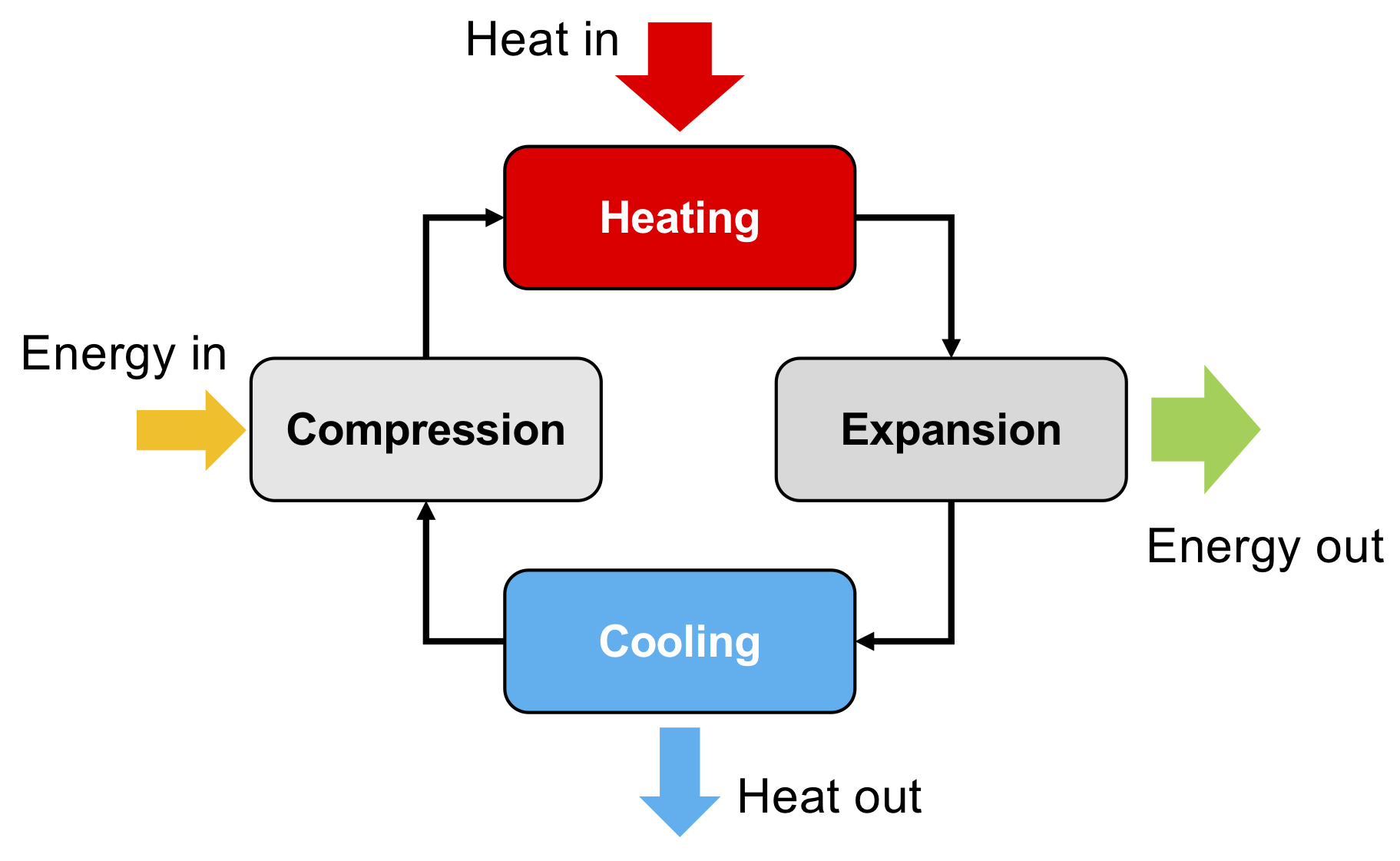2. What is a working fluid?
In the first section of ORC-101, the concept of a thermal power system was introduced. Within such a system, four distinct processes are coupled together to form a closed-loop thermal power system. The term working fluid refers to the fluid that undergoes each of these processes in turn to form the complete closed-loop system.

Diagram of the operating principle of a basic thermal power system.
The term working implies that the energy of the fluid is changing as it moves through the system, whilst the term fluid refers to it being in either a liquid or vapour state. Thus, if a thermal power system operated with air, meaning that a certain amount of air underwent the four processes of compression, heating, expansion and cooling in turn, the working fluid would be air. Similarly, if a thermal power system operated with water, meaning that a certain amount of water underwent the same processes in turn, the working fluid would be water.
A final example would the fluid contained within your fridge. You may be familiar with the term refrigerant to describe the fluids used within domestic fridges, but what is the purpose of this refrigerant? Essentially, the operating principle of a fridge is the reverse of a thermal power system (more on this in a later post perhaps…). More specifically, within a refrigerator, a fluid, in this case a refrigerant, undergoes a series of processes within a closed-loop system which has the net effect of providing a cooling effect. Thus, in this case, the refrigerant is referred to as the working fluid.